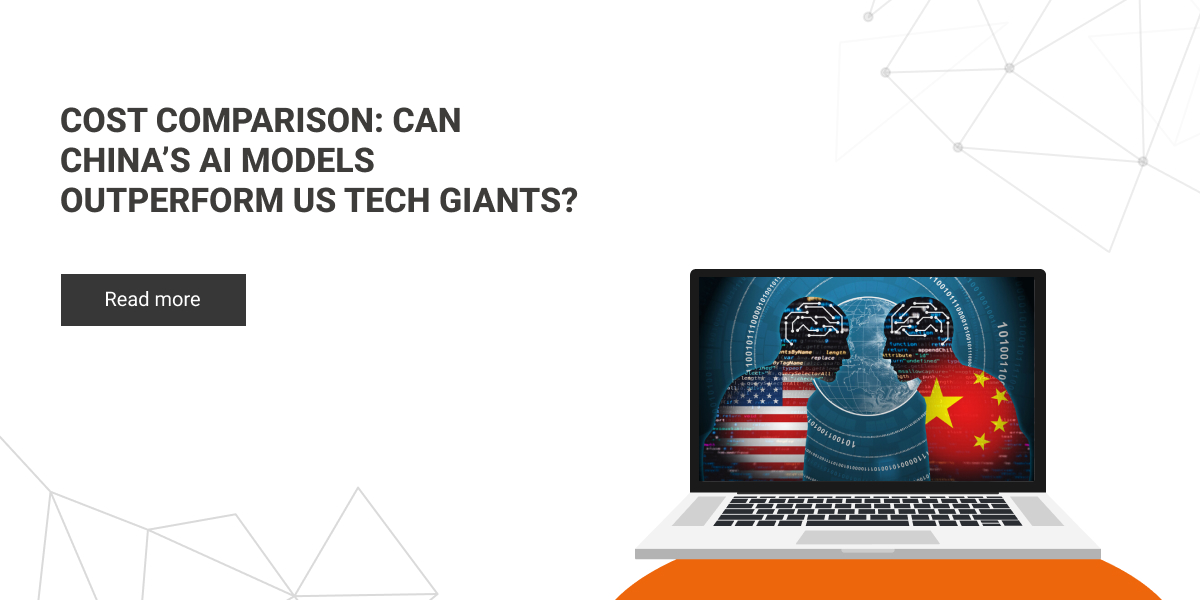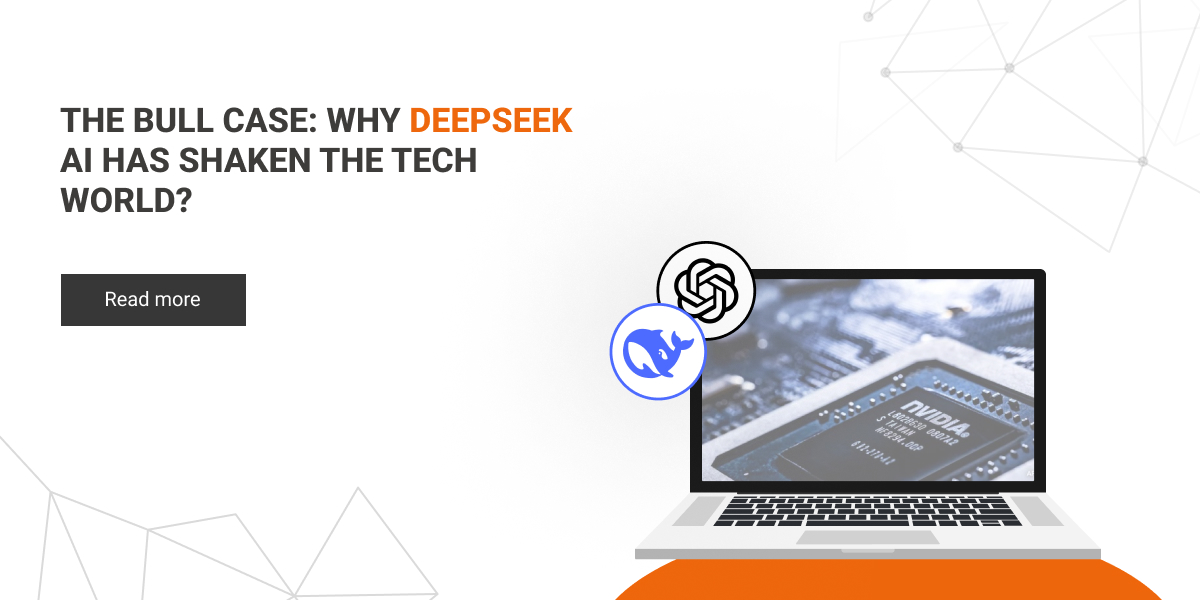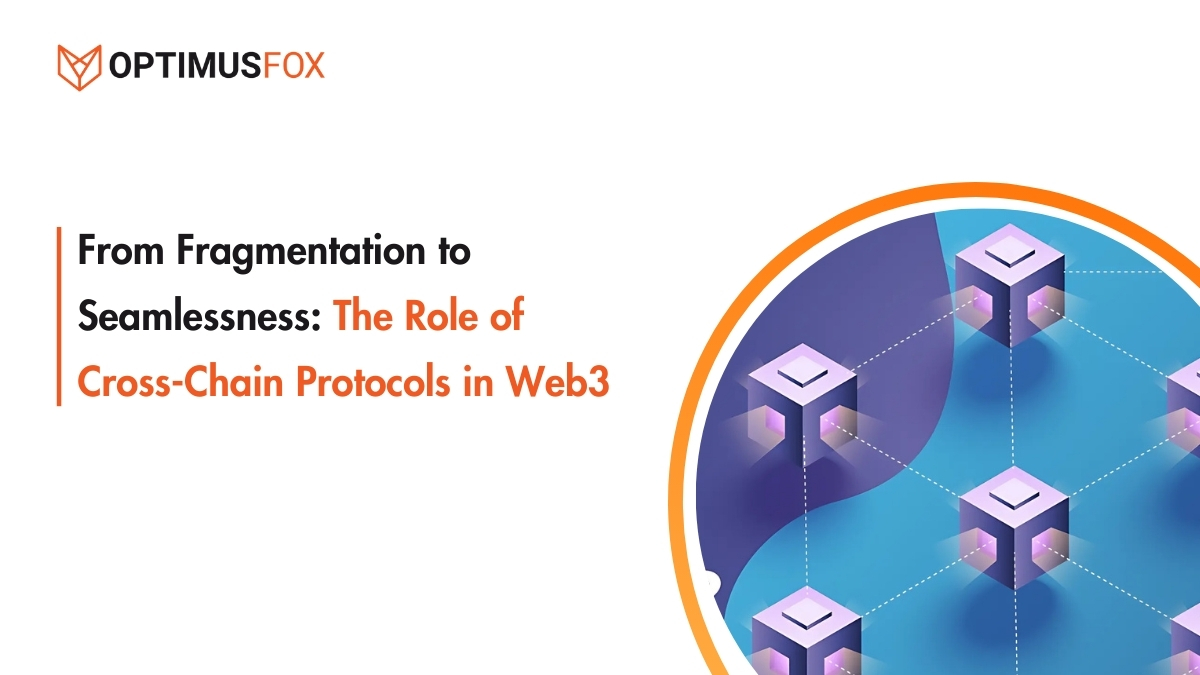The recent launch of DeepSeek AI R1 model has turned heads in the AI Industry. According to China, they have spent only $6 million per training run on their model, compared to the tens of millions required for U.S. competitors. This is amazing right, the social is full of the buzz Deepseek vs Chatgpt? Moreover, Its commercial pricing is also impressively low. According to DocsBots Website mentioned by Statistica, with 1 million tokens costing only 55 cents to upload. This rapid success raises important questions: can a Chinese AI model truly challenge the U.S. AI dominators without sacrificing quality and security?
In this post, we’ll compare cost and performance between top U.S. and Chinese AI infrastructures, to find out best open-source LLM mainly focusing on DeepSeek vs ChatGpt and others like Qwen, Gemini and Llama. We will also explore if China’s AI disruptors can truly outperform their U.S. counterparts.
Understanding AI Infrastructure and LLM Costs
AI infrastructure is a combination of hardware, software, and cloud services required to train and deploy AI models. When developing cutting-edge AI models like ChatGPT, Gemini, or DeepSeek, they require massive computational power which often involves specialized chips, vast datasets, and advanced training techniques. Typically, training a large language model (LLM) involves millions of dollars in computational costs.
According to analysis, running ChatGPT costs approximately $700,000 a day. That breaks down to 36 cents for each question.
The US models also demand extensive datasets, advanced algorithms, and constant tuning to ensure they perform at the highest level.
Technical Components LLMs Require:
- Compute Resources: The primary driver of cost is the high-performance computing required for training. This includes clusters of GPUs or TPUs capable of performing billions of calculations per second.
- Storage: LLMs require vast amounts of data to train, and storing these massive datasets involves high-capacity disk storage solutions. Costs are often tied to cloud-based storage services for easy access and redundancy. For example: ChatGPT uses at least 64 GB of RAM; A high-end GPU with at least 16 GB of VRAM; A large amount of storage space (at least several hundred GB).
- Software: Developing the algorithms and optimizing them for specific tasks involves not just the basic architecture (transformers, for example) but a sophisticated software stack, including machine learning frameworks (like PyTorch or TensorFlow) and specialized optimization techniques.
- Training Costs: On top of hardware, electricity is a major cost factor, particularly for supercomputers running 24/7. Models like GPT-4 annual consumption is equivalent to powering 21,602 homes in the US for a year.
The Evolution of AI Training Costs (2017-2023)
The evolution of AI training costs has seen an astonishing rise over the years. It reflects the growing sophistication and scale of large language models (LLMs). AI training costs have soared from modest beginnings to reach hundreds of millions today. This rise reflects the growing complexity of large language models (LLMs). Let’s examine how the increasing sophistication of AI models has led to this sharp escalation in development expenses.
The above image presents a fascinating timeline of AI model training costs from 2017 to 2023. It shows a dramatic increase in investment over the years.
- Google’s Transformer model in 2017, which cost a relatively modest $930, the expenses have grown exponentially.
- Google’s BERT-Large followed in 2018 at $3,300, and Meta’s RoBERTa Large in 2019 cost $160,000.
- The trend continued upward with OpenAI’s GPT-3 175B in 2020 requiring $4.3M, and Microsoft and NVIDIA’s Megatron-Turing NLG 530B in 2021 reaching $6.4M.
- Google’s developments in 2022 included LaMDA at $1.3M and PaLM (540B) at $12.4M.
- The year 2023 saw even more substantial investments, with Meta’s Llama 2 70B costing $3.9M, OpenAI’s GPT-4 estimated at $78.4M (though CEO Sam Altman suggested it exceeded $100M), and Google’s Gemini Ultra topping the chart at an astronomical $191.4M.
If you see the visualization, it notes that these figures are adjusted for inflation and were calculated based on training duration, hardware requirements, and cloud computing costs, according to The AI Index 2024 Annual Report.
US AI Models – The Pioneers
The U.S. has long been the leader in artificial intelligence development. Here are several tech giants that are driving innovation in tech space:
- ChatGPT:
It was developed by OpenAI and has revolutionized as conversational AI. With iterations like GPT-3 and GPT-4, it remains one of the most advanced models on the market. Training a model like ChatGPT costs upwards of $78 million, reflecting its complexity and the computational power required. ChatGPT app development costs can range anywhere between $100,000 to $500,000. The factors that affect the cost are the dataset’s size, the chatbot’s end-use case, the services, the features required, etc.
- Claude:
Claude AI is created by Anthropic. The ai model has emerged as a leading conversational agent as it provides an alternative to ChatGPT with a focus on safety and alignment. The development costs are significant but vary depending on deployment and specific business use cases.
- Llama (Meta):
Meta’s Llama series is a key competitor in the open-source AI space. While the models are cheaper to access for businesses, developing applications using Llama models still incurs considerable costs mainly for larger-scale integrations.
- Gemini (Google):
Google’s Gemini is the most expensive AI model in terms of training costs, requiring $191 million for development. It’s designed to handle more complex datasets, including multimedia formats. Despite its higher costs, Gemini is known for its reliability and performance across various tasks.
China’s AI Models: A Low-Cost Revolution
Recently, China has begun making waves with its innovative, cost-effective alternatives. Chinese companies are challenging the traditional AI ecosystem by introducing similar or better performance at a fraction of the price. Here are some of the newest models of AI:
DeepSeek AI launch of its R1 model has sent shockwaves through the AI industry. With a development cost of just $6 million, DeepSeek has proven that cutting-edge AI can be achieved on a lean budget. Its pricing structure is also far more accessible, with 1 million tokens costing only 55 cents to upload. Despite the lower costs, DeepSeek’s model has earned strong performance reviews, often outperforming U.S. models in key benchmarks.
- Alibaba Cloud’s Qwen-2.5-1M:
Last night, Alibaba launched their AI offerings, including the Qwen series. It quickly gained traction as a viable alternative to expensive models like GPT-4. With a heavy focus on cloud-based AI solutions, Alibaba provides highly competitive pricing, ensuring that businesses can scale AI-powered applications affordably.
Moonshot’s Kimi series is a rising star in China’s AI scene. But, it is a less-known AI architecture. However, the Kimi K1.5 has been praised for its efficiency and cost-effectiveness. As it is giving companies an affordable way to implement AI without compromising on quality.
- ByteDance’s Doubao 1.5 Pro:
The Chinese AI model, ByteDance is known for revolutionizing social media through TikTok, ByteDance is also making strides in AI. Doubao 1.5 Pro is one of their leading LLMs, offering impressive capabilities at a significantly lower cost compared to its Western counterparts.
Estimating AI Development Costs
The cost of AI development varies greatly depending on the scale, complexity, and project requirements. From infrastructure to labor, software, and training, each component contributes to the overall cost. On average, businesses can expect to invest between $10,000 to $50,000 or more in AI projects.
Key Cost Components:
- Infrastructure: Training AI models requires specialized hardware like GPUs or TPUs. High-end GPUs can cost over $10,000 each, with large projects needing thousands. Renting through cloud platforms like AWS, Google Cloud, or Azure can reduce upfront costs but comes with recurring monthly fees based on usage.
- Labor: Skilled professionals are crucial for AI development. Salaries for data scientists, machine learning engineers, and AI developers average between $120,000 to $160,000 per year. A small AI team can cost upwards of $400,000 annually, not including additional roles such as data engineers or consultants.
- Software & Tools: The cost of specialized AI software and tools can vary. Some companies opt for comprehensive platforms while others use individual tools for tasks like data annotation and model training. Expect to spend a few hundred to several thousand dollars monthly depending on usage.
- Deployment & MLOps: Once trained, models are typically deployed via APIs, adding ongoing costs for cloud services and API calls. MLOps pipelines, which maintain and retrain models, contribute to labor and cloud resource expenses.
- Security & Compliance: AI projects must comply with data privacy regulations like GDPR or HIPAA, which can incur additional costs for audits, certifications, and legal consultations. These costs can vary based on the project’s scope and complexity.
- Operational Costs: Running large AI models increases energy consumption, driving up operational costs. These costs fluctuate based on the scale of the model and the computational resources required.
Cost Breakdown: Is DeepSeek-R1 Really a Threat?
In particular, DeepSeek-R1 has been disruptive due to its low costs and strong performance. But longevity is controversial. However, that model only spends $6 million per training run, far less than models like ChatGPT or Google’s Gemini, which can cost tens of millions. Its commercial use pricing also reflects this, with 1 million tokens costing only 55 cents to upload and $2.19 to download, which is significantly cheaper than U.S.-based models like ChatGPT, which can charge $3–$5 per million tokens for input.
In fact, even models like Google’s Gemini come in at higher prices despite comparable or slightly inferior performance. This raises an important question for businesses: are they overpaying for performance they can get elsewhere for much cheaper?
The Controversy: Can DeepSeek AI Replace US Giants?
The ongoing controversy in the AI space centers around whether DeepSeek and other Chinese AI disruptors can truly replace the likes of ChatGPT, Gemini, and Claude. While many of these Chinese models offer compelling pricing, concerns remain around Chinese regulations and how they might affect international adoption.
The fear is that using DeepSeek, Alibaba, or ByteDance models might lead to data privacy concerns or geopolitical challenges. It might make it difficult for international organizations to fully embrace these models.
Despite these concerns, the low-cost nature of these Chinese models cannot be ignored. If DeepSeek and others can maintain performance parity while reducing costs, they could become formidable competitors to the U.S. giants especially for businesses looking for more cost-effective AI solutions.
A Shifting Landscape
The AI world is rapidly getting innovative, and the competition between U.S. tech giants and Chinese disruptors is only intensifying. While U.S. companies like OpenAI, Google, and Meta have long been the gold standard, Chinese models like DeepSeek, Alibaba Cloud, and ByteDance are quickly closing the gap. They are offering similar or even superior performance at a fraction of the cost. However, It means for businesses there will be more options and opportunities to leverage AI without the massive price tag that has historically been associated with top-tier models. However, the decision of which AI to adopt goes beyond just price and performance; data privacy, geopolitical risks, and compliance with local regulations will play a critical role in shaping the future of AI adoption. For the future, users and experts will decide after using it for sometime that China’s disruptors will be the dominant one or the US remains.





